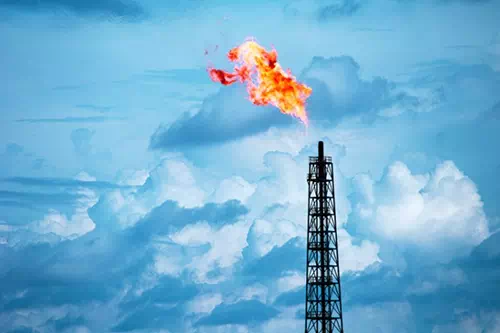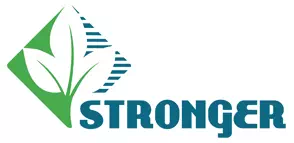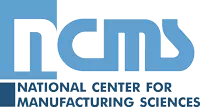|
Well Production
Production for land based (i.e., onshore) crude oil and natural gas include the following basic activities:
Well Workover
This first phase of oil or natural gas production, termed primary production, may continue for many years, requiring only routine maintenance. However, as the oil or gas is removed from the formation the formation pressure declines to the point where additional maintenance is needed to keep the well economical; otherwise, the well will be plugged and abandoned. This periodic maintenance is called a workover.
During a workover, several tasks may be undertaken (e.g., repairing leaks in the casing or tubing, replacing motors or other downhole equipment, stimulating the well (including additional hydraulic fracturing), perforating a different section of casing to produce from a different formation or section of a formation in the well, and painting and cleaning the equipment). The workover often requires bringing in a rig for the downhole work, although this rig can be smaller than those used for initially drilling a well.
Two procedures performed to improve the flow of fluid during workovers are: removing accumulated salts (called scale) and paraffin, and treating production tubing, gathering lines, and valves for corrosion with corrosion-prevention compounds.
As fluids are withdrawn from the formation, the salts that are dissolved in the produced water precipitate out of solution as the solution approaches the surface and cools. The resulting scale buildup can significantly reduce the flow of fluid through the tubing, gathering lines, and valves. Examples of scale removal chemicals are hydrochloric and hydrofluoric acids, organic acids, and phosphates. These solvents are added to the bottom of the wellbore and pumped through the tubing through which extracted fluid passes. In a similar fashion, corrosion inhibitors may be passed through the system to mitigate and prevent the effects of acidic components of the formation fluid, such as H2S and CO2. These corrosion inhibitors, such as ammonium bisulfite or several forms of zinc, may serve to neutralize acid or form a corrosion-resistant coating along the production tubing and gathering lines. Corrosion control activities can be continuous, not just at workover.
Field Processing
Processing of natural gas in the field (i.e., at the drilling site) is conducted in much the same manner as it is carried out at regional gas plants, but on a smaller scale. For more information on field processing, see Processing.
Potentially Applicable Regulations
-
Clean Air Act (CAA)
-
40 CFR Part 60 Subpart A. General provisions, including control device and work practice requirements for flares and compliance with standards and maintenance requirements (maintain air pollution control equipment in a manner consistent with good air pollution control practice for minimizing emissions).
-
40 CFR Part 63 Subpart A. General provisions, General provisions and compliance with standards and maintenance requirements (maintain air pollution control equipment in a manner consistent with good air pollution control practice for minimizing emissions).
-
40 CFR Part 60 Subpart OOOO and Subpart OOOOa. Standards of Performance for Crude Oil and Natural Gas• 40 CFR Part 60 Subpart KKK. Standards of Performance for Equipment Leaks of VOC at Onshore Natural Gas Processing Plants .
-
40 CFR 60 Subpart KKKK. Standards of Performance for Stationary Combustion Turbines.
-
40 CFR 60 Subpart LLL. Standards of Performance for Onshore Natural Gas Processing: SO2 Emissions.
-
40 CFR 63 Subpart HH. National Emission Standards for Hazardous Air Pollutants from Oil and Natural Gas Production Facilities.
-
40 CFR 98 Subpart W. Petroleum and Natural Gas Greenhouse Gas (GHG) Reporting Rule.
-
40 CFR 68 and CAA 112(r)(1). Chemical accident prevention provisions and the Risk Management Program.
- Clean Water Act (CWA)
- Wastewater Point Source Discharges (Section 402). Where direct discharge of wastewater (e.g., flowback, produced water) is permitted, the owner/operator must obtain a National Pollutant Discharge Elimination System (NPDES) permit. NPDES permits are issued by EPA or authorized states.
- Wastewater Indirectly Discharged via Publicly Owned Treatment Works (POTW) (40 CFR 302). EPA has established pretreatment standards that apply to wastewater (e.g., flowback, produced water) discharged to POTWs by industry.
- General prohibition of discharges of wastewater pollutants from onshore unconventional oil and gas operations to POTWs. (40 CFR 435) The standards prohibit discharges of wastewater pollutants from onshore unconventional oil and gas (UOG) extraction facilities to publicly owned treatment works (POTWs).
- Wastewater Indirectly Discharged via Centralized Waste Treatment (CWT) (40 CFR 302). When wastewater (e.g., flowback, produced water) is transported to a CWT, it is the responsibility of the CWT to properly treat and discharge it.
- Stormwater (Section 402, 40 CFR 122). Stormwater is generated when precipitation from rain and snowmelt events flows over land or impervious surfaces and does not percolate into the ground.
- Waterbody/Wetlands Protection (Sections 401 and 404). Water quality standards and dredge and fill regulations may apply to wetlands and all other jurisdictional waters, including headwater streams.
- Spill Prevention, Control and Countermeasures (SPCC) (Section 311, 40 CFR 112). Includes requirements for oil spill prevention, preparedness, and response to prevent oil discharges to navigable waters. Examples where SPCC might apply during drilling and workover include:
- Fuel storage for vehicles
- Lubrication oils (e.g., for pump jacks)
- Oil in transformers
- Liquid oil condensate (i.e., liquid condensate is an oil)
- Hydraulic fracturing fluids (e.g., friction reducers are frequently petroleum based)
- Emergency Planning and Community Right-to-Know Act (EPCRA) (Sections 302, 303, 311, and 312). EPCRA requires facilities that use or store hazardous chemicals in certain quantities to report those inventories to state and local emergency planning organizations.
- Resource Conservation and Recovery Act (RCRA) Subtitle C (hazardous waste) and Subtitle D (solid waste). RCRA is the primary law for regulating solid and hazardous wastes.
- Safe Water Drinking Act (SWDA). Administered under the SDWA is EPA's Underground Injection Control (UIC) program, which is responsible for regulating the construction, operation, permitting, and closure of injection wells that place fluids underground for storage or disposal.
- Available emergency response authorities EPA can use to address adverse impacts from oil or natural gas drilling, production and processing:
- Safe Water Drinking Act (SDWA) (Section 1431). Action to address imminent and substantial endangerment caused by contaminants present or likely to enter a public water system or underground source of drinking water.
- Clean Air Act (CAA) (Section 303). Action to address imminent and substantial endangerment of public health or welfare, or the environment from air emissions or pollution.
- Comprehensive Environmental Response, Compensation, and Liability Act of 1980 (CERCLA) (Section 104) Removal action to address release that may present imminent and substantial endangerment, subject to the "petroleum exclusion."
- Comprehensive Environmental Response, Compensation, and Liability Act of 1980 (CERCLA) (Section 106). Order to address imminent & substantial endangerment, subject to the "petroleum exclusion."
- Clean Water Act (CWA) (Section 504). Action to address imminent & substantial endangerment to health, welfare, or livelihood caused by discharge from "pollution source."
- CWA/OPA 311 action to address imminent and substantial threat to public health or welfare from discharges of oil or hazardous substances to navigable waters.
- Resource Conservation and Recovery Act (RCRA) (Section 7003). Action to address solid waste handling that may present an imminent & substantial endangerment to health or the environment.
More Resources
Final Report: Oil and Gas Extraction Wastewater Management. The EPA completed a stakeholder engagement effort in 2020 that sought input on how the Agency, states, tribes and stakeholders regulate and manage wastewater from the oil and gas industry.
NaturalGas.org - Production. An educational website maintained by the Natural Gas Supply Association that covers a variety of topics related to the natural gas industry. The purpose of this website is to provide visitors with a comprehensive information source for topics related to natural gas, and present an unbiased learning tool for students, teachers, industry, media, and government.
|






